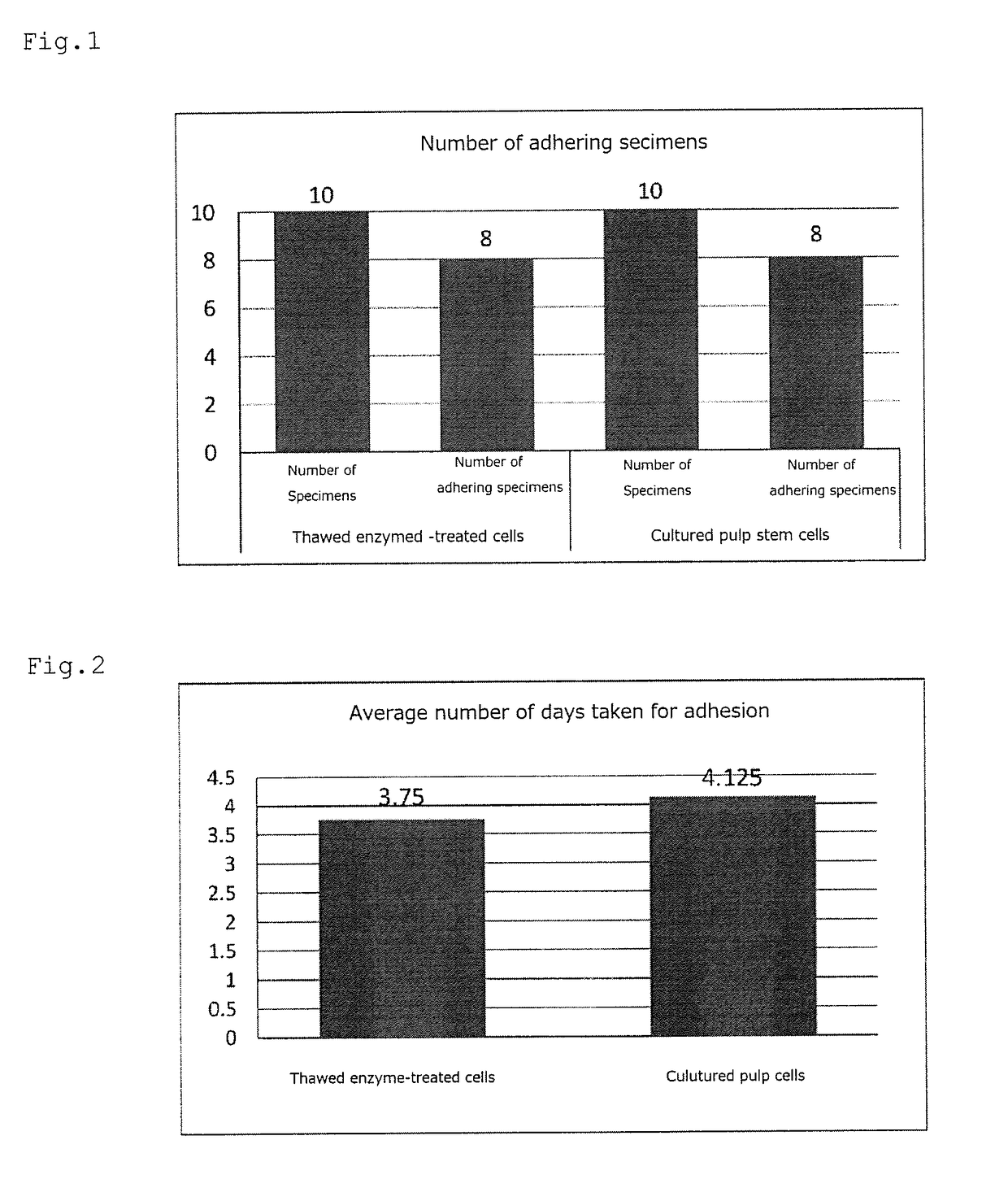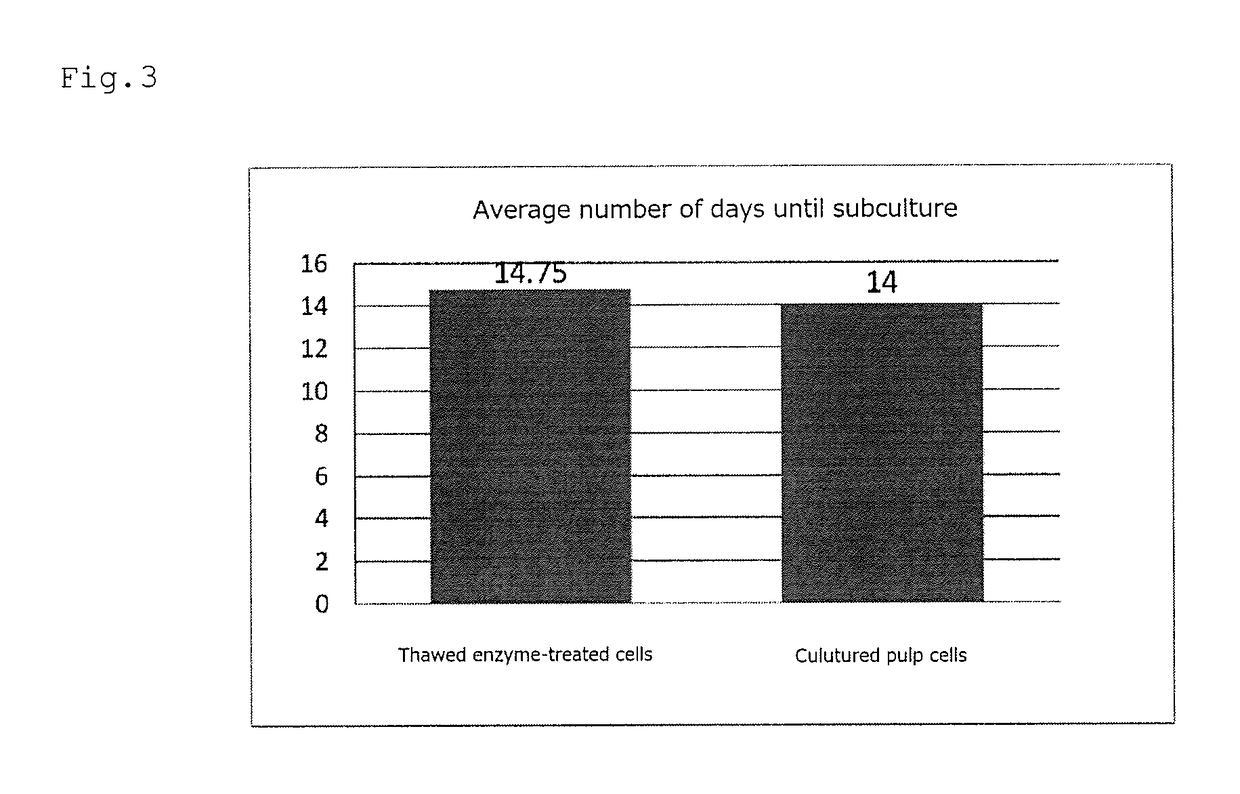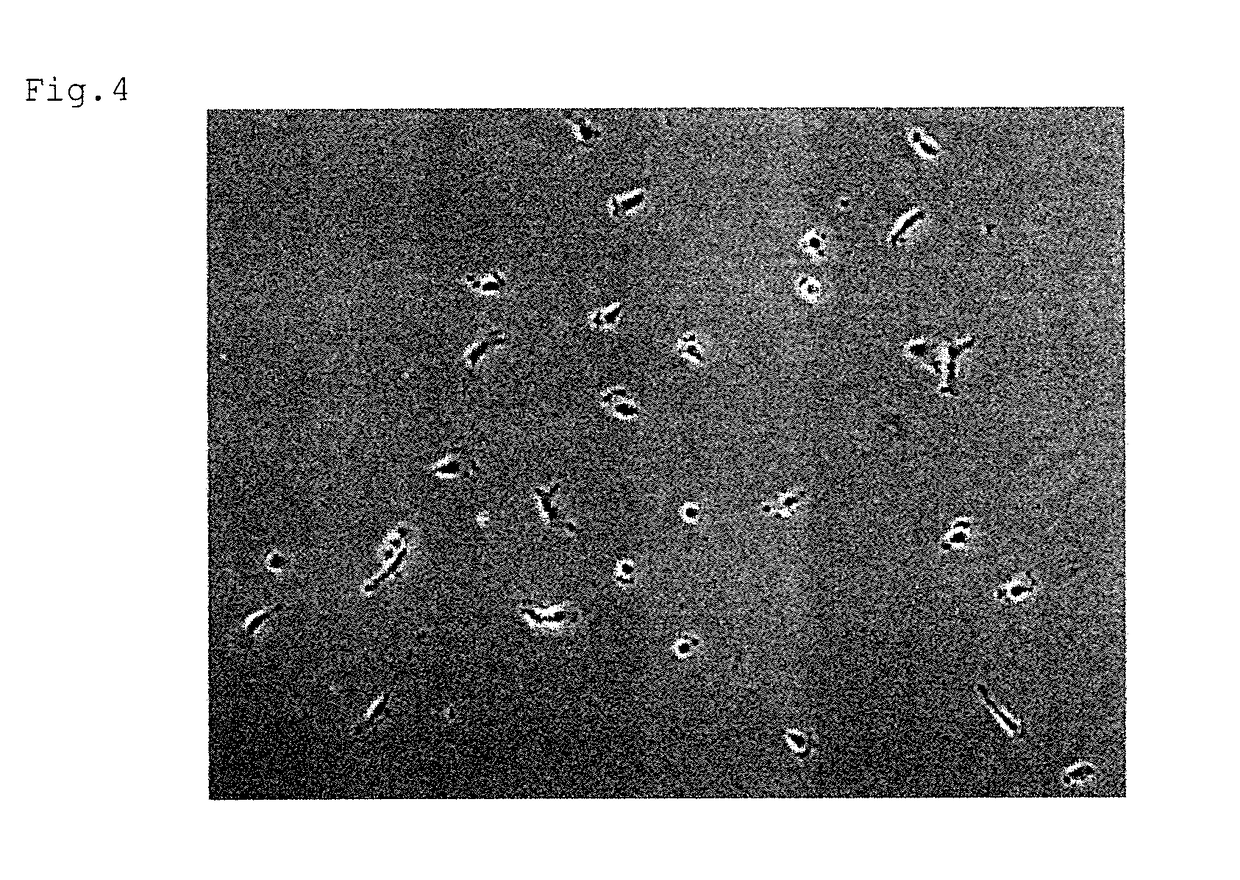Method for producing frozen mesenchymal cells and method for producing implantable therapeutic member
a mesenchymal cell and frozen technology, applied in the direction of skeletal/connective tissue cells, prosthesis, drug compositions, etc., can solve the problems of increasing the amount of cells to be cryopreserved, complicated steps, and increasing the cost of culturing cells and facilities such as cosub>, so as to reduce the time, cost and labor, and achieve high viability and adhesion rate
- Summary
- Abstract
- Description
- Claims
- Application Information
AI Technical Summary
Benefits of technology
Problems solved by technology
Method used
Image
Examples
example 1
Cryopreservation of Cells Treated with Enzyme and Culture of Thawed Cells
[0087](1) Extraction of Pulp Tissue
[0088]After a tooth was dentally extracted, a pulp tissue was placed in a 15 mL sterile tube filled with an α-MEM solution so as to be immersed in the α-MEM solution. The pulp tissue was then refrigerated at a low temperature (4° C.) and preserved for 24 hours including the transportation time.
[0089]The tooth was removed into a sterile petri dish, and a pulp tissue was extracted by using a pair of tweezers and a reamer. The pulp tissue was transferred into a test tube and rinsed with 3 mL of rinse PBS. The pulp tissue was naturally precipitated, and the supernatant was discarded. The precipitated pulp tissue was further rinsed with 3 mL of rinse PBS. This rinsing process was further repeated three times. That is, rinsing was performed five times in total.
[0090](2) Proteolytic Enzyme Treatment
[0091]After the fifth rinsing process in (1), the supernatant was discarded, and 6 mL ...
reference example 1
Culture of Pulp Cells (without Cryopreservation)
[0108](1) Extraction of Pulp Tissue
[0109]Reference Example 1 used one (half amount) of two pulp cell populations obtained by halving the pulp cell population prepared in (1) and (2) of Example 1.
[0110](2) Culture of Pulp Cells
[0111]An α-MEM solution of 3.5 mL was added to the pulp cells (to be referred to as “cultured pulp cells” hereinafter) obtained in (1) and (2) of Example 1 to obtain 5 mL of solution in total. The cells were then disseminated in a T-25 flask, and culture was started.
[0112]The adhesion of cells to a dish was confirmed in eight specimens out of 10 specimens (Table 2).
[0113]The number of disseminated cells was obtained by measuring, with a counting chamber, the number of cells obtained by adding 500 μL of an α-MEM solution to the pulp cells obtained by centrifugal separation in (2) (4.5 mL of an α-MEM solution was added to the solution after measurement of the number of cells to obtain 5 mL of solution in total), and...
PUM
| Property | Measurement | Unit |
|---|---|---|
| time | aaaaa | aaaaa |
| temperature | aaaaa | aaaaa |
| total time | aaaaa | aaaaa |
Abstract
Description
Claims
Application Information
 Login to View More
Login to View More - R&D
- Intellectual Property
- Life Sciences
- Materials
- Tech Scout
- Unparalleled Data Quality
- Higher Quality Content
- 60% Fewer Hallucinations
Browse by: Latest US Patents, China's latest patents, Technical Efficacy Thesaurus, Application Domain, Technology Topic, Popular Technical Reports.
© 2025 PatSnap. All rights reserved.Legal|Privacy policy|Modern Slavery Act Transparency Statement|Sitemap|About US| Contact US: help@patsnap.com



